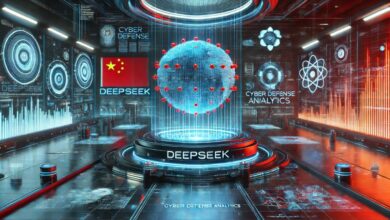2024: The year quantum moves past its hype?

Viewers of the popular 60 Minutes television magazine may have been surprised to see a feature in December on the state of quantum computing, typically an unapproachable, wonky topic for mainstream audiences. But, given the hype and ensuing adoption level with all things AI, perhaps this is a sign that an even more sophisticated — and potentially life-changing — technology will have its moment next.
More significant than the recent flurry of media attention around this esoteric technology (driven in part by some notable experiments announced by key players, large and small) is the imminent re-authorization by the U.S. Congress of the bi-partisan supported National Quantum Initiative. If passed as expected, it will earmark more than $3 billion in funds for quantum research over the next five years.
There is also newfound urgency in seeing results sooner: Alan McQuinn, a staff member on the House Committee on Science, Space and Technology, recently emphasized that the initiative will focus on investing in near-term quantum sciences applications.
“We wanted to start moving towards use cases, moving towards applications, to try and show proof of need for this technology so that it can be deployed across economic sectors,” he said.
VB Event
The AI Impact Tour – NYC
Weâll be in New York on February 29 in partnership with Microsoft to discuss how to balance risks and rewards of AI applications. Request an invite to the exclusive event below.
Similar initiatives by UK, Canadian and EU government entities are fueling more short-term progress, motivated at least in part by investment and developments in China. Indeed, staying ahead in quantum may in fact be a more strategic priority than the AI arms race.
From hype to reality
Quantum computing enthusiasts have rightly been accused of overhyping the technology’s near-term impacts. Its potential to solve macro challenges in science, health, energy, environment and finance drove a frenzy of anticipation.
Expectations were, inevitably, set too high and for results to happen too soon.
In 2019, Google claimed “quantum supremacy,” where a quantum device outperformed a classical one. While the application was not practically useful, a wave of quantum start-ups and big funding rounds emerged in the public and private markets. Big claims in impossible timeframes were subsequently made.
By 2022, this irrational exuberance had cooled. The financial markets retracted, and valuations fell as the challenge of building a useful quantum computer was understood. Talk of a “quantum winter” emerged as frustrated investors, looking for moonshot wins, hinted at pulling back if demonstrable and practical progress could not be seen.
But 2024 will be when we see steady progress and tangible goals, replacing years of boom-or-bust thinking.
What it takes to move quantum forward
Let me summarize that challenge in one word: Errors.
A typical quantum computer is made up of three layers: quantum algorithms, the quantum error correction stack and quantum bits (qubits).
Qubits are prone to errors, which quickly overwhelm their calculations. By developing quantum algorithms and a set of techniques called quantum error correction (QEC) then we can reduce errors to the point where we can unlock world-changing applications.
This will not happen overnight. It won’t happen next year. When will it happen? Historically, quantum experts have always said we’re ‘about 10 years away’ from that goal.
But the countdown has already begun. With the development of next-generation quantum algorithms and error correction coupled with ongoing results at the qubit level, I predict this timescale is closer to 7 to 8 years.
Doubling down on error correction
Progress in QEC dominated in 2023 with several landmark papers and announcements. A year ago, Google released a code to correct errors, and, more recently, quantum company Quera has produced the largest number of error-free qubits, while IBM’s new roadmap has a core focus on error correction.
As we enter 2024, long-term optimism is higher than ever, with quantum computing predicted to unlock $1.3 trillion by 2035 across multiple industries. Waves of investment also arrived towards the end of 2023 for strong quantum companies.
These investments were predominantly led by governments using a ‘testbed’ business model. Testbeds allow experts to test and benchmark the many different components required to build a useful quantum computer, breaking the challenge into short-term, digestible chunks.
In the long-term, the UK has arguably unveiled the most ambitious plans to date with a clear target to create a ‘TeraQuop’ quantum computer (or one capable of a trillion error-free operations) by 2035. A TeraQuop is significant, as it truly takes us beyond supercomputing.
By contrast, today’s quantum computers are capable of a just few hundred error-free operations.
This leap may sound like a return to the irrational exuberance of previous years. But there are many tangible reasons to believe.
The quantum computing industry is now connecting these short-term testbeds with long-term moonshots (such as the TeraQuop) as it starts to aim for middle-term, incremental (but just as ambitious) goals.
As we approach this threshold, we’ll start to more intrinsically understand errors and fix them. We can start to model simple molecules and systems, developing more powerful quantum algorithms. Then, we can work on more interesting (and impactful) applications with each new generation/testbed of quantum computer.
What will those applications be? We don’t know. And that’s OK.
Let me take you further back in time when one of the world’s early digital computers was developed: EDSAC (Electronic Delay Storage Automatic Calculator). Developed in the Cambridge University Mathematical Laboratory, EDSAC was the first practical general purpose stored program electronic computer. The winners of three Nobel Prizes in Chemistry (1962), Medicine (1963) and Physics (1974) all acknowledged the role it played in their research.
These applications were unimaginable when EDSAC was first run in 1949.
We’re now at the same point in quantum computing.
We don’t know exactly what applications a useful quantum computer will unlock. But I predict there will be many, multidisciplinary Nobel Prize nods to come for the teams that develop the world’s first useful quantum computer.
Fixing errors unlocks potential
But first we need to develop better quantum algorithms and QEC techniques. Then, we will need fewer qubits to run the same quantum calculations and we can unlock useful quantum computing, sooner.
As progress and pace continues to accelerate, 2024 will be the year when the conversation around quantum applications has real substance as we follow tangible goals, commit to realistic ambitions and unlock real results.
The over-hype is over, and the clock is ticking.
Steve Brierley is CEO and founder of quantum computing company Riverlane.
DataDecisionMakers
Welcome to the VentureBeat community!
DataDecisionMakers is where experts, including the technical people doing data work, can share data-related insights and innovation.
If you want to read about cutting-edge ideas and up-to-date information, best practices, and the future of data and data tech, join us at DataDecisionMakers.
You might even consider contributing an article of your own!



